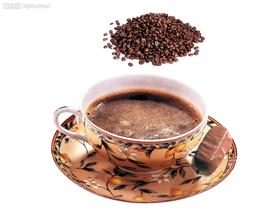El Salvador Coffee Manor with excellent taste introduction to boutique coffee
The civil war caused chaos and affected economic development, but ironically allowed the ancient coffee to be preserved, and the situation was so chaotic that coffee producers in El Salvador failed to catch up with the renewal of coffee varieties in Central and South America.
El Salvador produces 100% Arabica coffee, of which 68% is Bourbon, Coffea arabica var. Bourbon), 29% Pacas, other varieties including Pacamara,Caturra, etc.
The Pacas variety, first discovered in El Salvador in 1949, is a natural hybrid between bourbon and Catura.
The variety Pacamara, which was artificially bred by pacas and maragogipe (or maragogype), was first bred in 1958 (1954). Pacamara species is a rare artificial breeding of excellent varieties, blue is better than blue, perfectly inheriting the advantages of the mother plant, both the excellent taste of pacas species, raw bean granules also inherited the large size of malagogipe. The Pacamara species is considered to be the result of the pursuit of large Arabica species, "natural and man-made disasters" and "ill-fated". The challenges facing the coffee industry in El Salvador are best described. Despite the haze of war, El Salvador's coffee production still faces challenges from time to time, including hurricanes in 1998, earthquakes in 2001, volcanic eruptions in 2002, and leaf rust in 2012.
Despite the challenges, El Salvador maintained a high level of coffee production, according to ICO International Coffee Organization, from 2008 to 2012, total coffee production in El Salvador remained at the Top15 level among ICO member countries. In 2013, affected by the leaf rust disaster, 70% of domestic farms were infected, and production dropped sharply by about 40%, falling to 161742, when coffee was introduced to El Salvador from the Caribbean (one said 1740).
In the mid-19th century, El Salvador's original export pillar Indigo (one of the dyes) received a gradual decline in the development of synthetic dyes in Europe, and coffee gradually became the main export product under the guidance of the government.
In 1856, the first 693 bags of coffee beans were shipped to Europe. Europe was El Salvador's chief coffee customer until World War II, which was replaced by the United States after World War II.
In the 1970s, El Salvador produced a record 350000 bags of coffee. With the intensification of the civil war, the coffee industry was in turmoil.
Coffee production in El Salvador was once affected by domestic political instability. In 1992, the parties signed a peace agreement and the civil war was suspended. The coffee industry begins to recover in the Republic of El Salvador, Rep ú blica de El Salvador in Spanish and the Republic of El Salvador in English.
It is located in Central America, bordering Guatemala and Honduras in the north, and the Pacific coastline in the west and south.
The smallest country in Central America and the most densely populated country in Central America. The land area is 21393 square kilometers, the population is 6.25 million (data 2012), and the population density is 327 people / square kilometers.
The economy is dominated by agriculture, with a per capita GDP of US $3722 in 2011. Agricultural products are mainly coffee and cotton.
The country is divided into 14 provinces, 7 of which produce coffee.
There are many volcanoes in the territory, with the name of "the country of volcanoes". The lowest elevation in the territory is 0 meters, and the highest is 2385 meters of Santa Ana active volcano.
It became a Spanish colony in 1524.
Independence from Spain in 1821.
In 1824, he joined the Union of Central America, including Guatemala, Honduras, Nicaragua, Costa Rica, and Mexico.
In 1841, seceded from the Union, became independent, and established a republic.

Important Notice :
前街咖啡 FrontStreet Coffee has moved to new addredd:
FrontStreet Coffee Address: 315,Donghua East Road,GuangZhou
Tel:020 38364473
- Prev

Fruit aromas of Cuba Crystal Mountain Coffee Estate Flavors Taste characteristics
Cubita is produced from the uncontaminated coffee of Crystal Mountain, a high-altitude area of Cuba. Crystal Mountain is geographically adjacent to the Blue Mountains of Jamaica and has similar climatic conditions, which can rival Jamaica Blue Mountain coffee. Crystal Mountain is also known as the Blue Mountain of Cuba. So there are a lot of coffee under the Cuban Blue Mountain banner, but the purest Crystal Mountain coffee Cubita, is allowed to use Cuban crystal.
- Next

Taste of Nicaraguan boutique coffee beans an introduction to the characteristics and flavor of the manor area
In many countries, coffee production will be seriously affected for political reasons. Nicaraguan coffee industry is no exception. The 1979 revolution forced coffee planters to flee to Miami. A period of indecision followed, when the government considered whether to redistribute land (including many plantations), which led to a shortage of coffee and a decline in production since the early 1970s
Related
- Detailed explanation of Jadeite planting Land in Panamanian Jadeite Manor introduction to the grading system of Jadeite competitive bidding, Red bid, Green bid and Rose Summer
- Story of Coffee planting in Brenka region of Costa Rica Stonehenge Manor anaerobic heavy honey treatment of flavor mouth
- What's on the barrel of Blue Mountain Coffee beans?
- Can American coffee also pull flowers? How to use hot American style to pull out a good-looking pattern?
- Can you make a cold extract with coffee beans? What is the right proportion for cold-extracted coffee formula?
- Indonesian PWN Gold Mandrine Coffee Origin Features Flavor How to Chong? Mandolin coffee is American.
- A brief introduction to the flavor characteristics of Brazilian yellow bourbon coffee beans
- What is the effect of different water quality on the flavor of cold-extracted coffee? What kind of water is best for brewing coffee?
- Why do you think of Rose Summer whenever you mention Panamanian coffee?
- Introduction to the characteristics of authentic blue mountain coffee bean producing areas? What is the CIB Coffee Authority in Jamaica?

